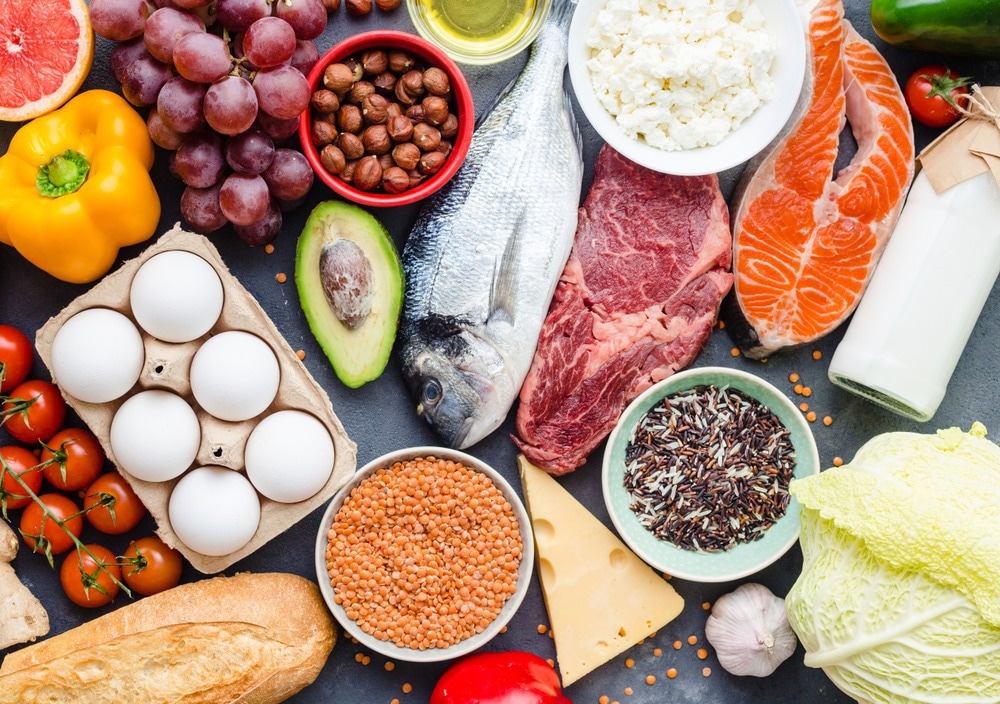In a recent study published in the Proceedings of the National Academy of Sciences (PNAS), researchers estimated the environmental impact of food products.
 Study: Estimating the environmental impacts of 57,000 food products. Image Credit: Elena Eryomenko/Shutterstock
Study: Estimating the environmental impacts of 57,000 food products. Image Credit: Elena Eryomenko/Shutterstock
Background
Transitioning to environmentally sustainable food systems is essential to meet the international biodiversity and climate goals. As such, it is pivotal to estimate and inform the environmental impact of commercial food products. Previous investigations have reported the environmental impact of commodities such as fruits, nuts, wheat, or red meat.
This potentially leaves a considerable information gap as most food products contain numerous ingredients. The environmental impact of most foods can not be readily known. This is because the exact quantity of each ingredient is often deemed a trade secret, and the task is daunting, given the sheer number of food products.
The study and findings
In the present study, researchers developed an algorithm that uses available data to estimate the environmental impacts of 57,185 food products in the United Kingdom (UK) and Ireland. The algorithm utilized previous information from similar products (ingredients with available percent composition) to infer the composition of the remaining ingredients.
The composition estimates were integrated with environmental databases to measure the impact of food products across four indicators – greenhouse gas emissions, land use, eutrophication potential, and scarcity-weighted water use. The primary database used was harmonized environmental storage and tracking of the impacts of agriculture (HESTIA).
However, because HESTIA lacks data on fish, the authors supplemented it with the blue food assessment data. The source/origin of the ingredient was not identified, as it was unavailable for most foods. A Monte Carlo analysis was performed to estimate the mean environment impact for each indicator, using information from the food database (FooDB).
A composite impact score (0 to 100) was derived because consumers prefer simpler ecolabels. Accordingly, a product with a score of 10 would have five times higher environmental impact than that with a score of two, but half the impact of a product with a score of 20. The environmental impact was reported per 100 grams of the food product. The median average estimated impact score was 1.6, implying that most food products had a relatively lower impact.
Dried beef products like beef jerky and biltong had the highest impact scores (close to 100), whereas the lowest-impact products were made of water (sugary drinks). Next, the algorithm’s accuracy was tested on all products with an available composition of all ingredients. Products included ready meals, fruit drinks, breakfast cereals, sweet and savory snacks, and pastries.
The algorithm was tested by comparing the impact scores derived using the composition provided on the back of the package (known impact score) against scores estimated when the composition was imperfectly known for the same products (estimated impact score). They computed a log ratio of the estimated impact score to the known impact score.
The authors found that the estimated impact was, on average, 1.6% lower than the known impact. Moreover, the known and estimated impact scores were not significantly different. Further, the team analyzed the estimated impact of food products categorized by retailers. For this analysis, the authors focused on products available at Tesco, the largest retailer in the UK.
Tesco products were classified into eight categories based on the aisle and shelf of food products – 1) beverages, 2) nuts, fruits, and vegetables, 3) bread and cereals, 4) snacks, 5) desserts, 6) prepared foods, 7) kitchen accessories, and 8) eggs, dairy, meat, and plant-based substitutes. The lowest impact scores were for sugary drinks and beverages.
Vegetables, dairy and meat alternatives, snacks (chips, popcorn, crisps, etc.), bread, and some cereal grains had an estimated impact of < 2. Many desserts, prepared foods (ready meals, pizzas), and other cereals had an estimated impact of 2 – 5. Products with an average score of 5 – 10 included sweet and savory spreads, nuts, fish, some meat types, and cheese.
Beef and lamb products had the highest estimated impact. Sensitivity analyses revealed that the lack of sourcing data on ingredients was a potential limitation. Furthermore, the nutrition quality of products was assessed using NutriScore, a food health profiling method that has improved health outcomes at a population level.
Many aisles at Tesco had more nutritious and sustainable food products and included meat alternatives, vegetables, fruits, breakfast cereals, and salads. However, there were also multiple aisles with nutritional and environmental impacts above the median, which included cheese, savory pies, and chocolate.
Some aisles included products with good nutritional value but an estimated environmental impact above the median. These products were nuts, fish and seafood, beef and lamb products, and ready meals. Sensitivity analyses indicated that the results were robust.
Conclusions
In summary, the authors demonstrated that the developed algorithm reasonably estimated the environmental impact of diverse food products even when limited information on ingredient composition was available. Moreover, most nutritious products (excluding drinks) were also environmentally sustainable.
While sensitivity analyses suggested that the lack of sourcing/origin information was unlikely to influence the estimated environmental impact significantly, it remained a limitation to comprehensively evaluating the ecological impact.